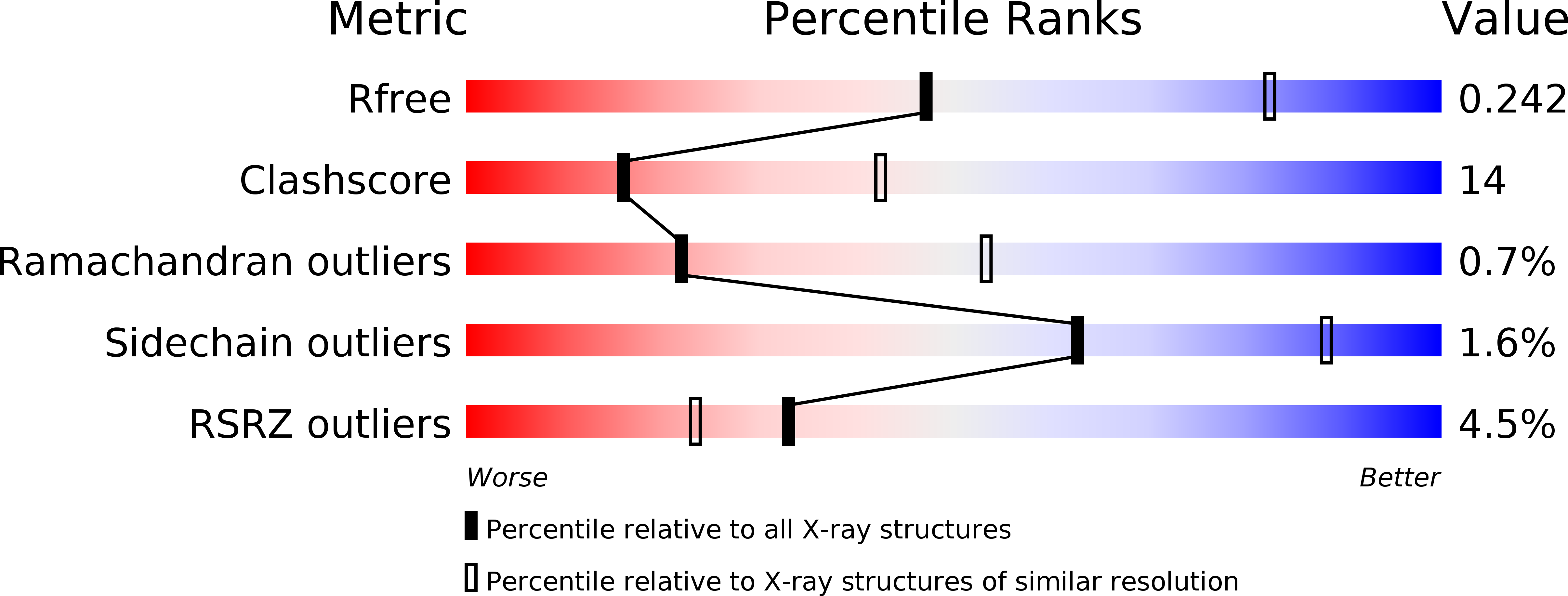
Deposition Date
2004-09-13
Release Date
2004-10-22
Last Version Date
2023-12-13
Entry Detail
PDB ID:
1W7W
Keywords:
Title:
Structure and mutational analysis of a plant mitochondrial nucleoside diphosphate kinase: identification of residues involved in serine phosphorylation and oligomerization.
Biological Source:
Source Organism:
PISUM SATIVUM (Taxon ID: 3888)
Host Organism:
Method Details:
Experimental Method:
Resolution:
2.80 Å
R-Value Free:
0.26
R-Value Work:
0.23
R-Value Observed:
0.23
Space Group:
P 21 21 21


